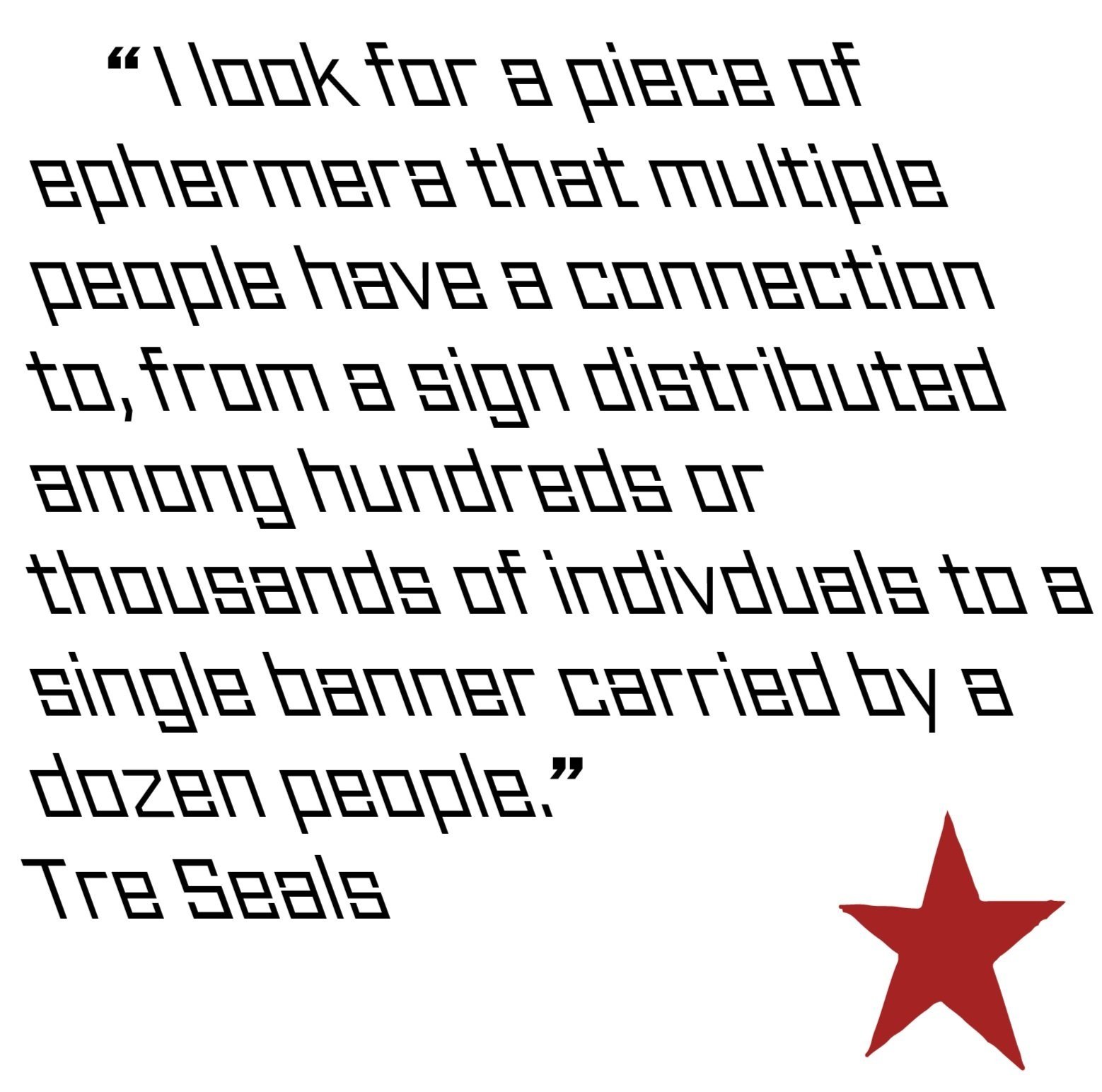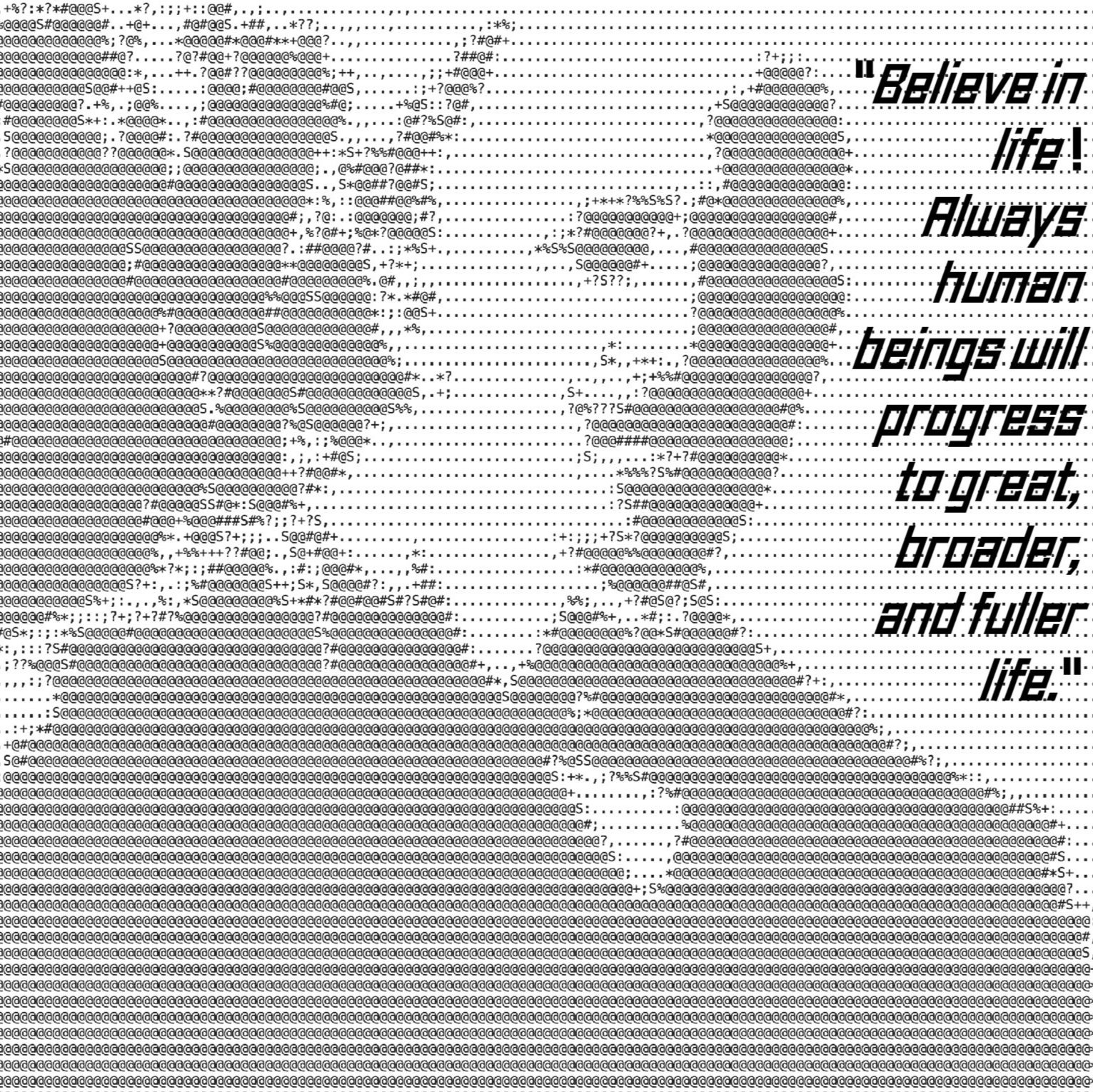typing the revolution
For our graphic design final, we were asked to design a mock museum exhibition about an artist or movement. I have always loved the originality of protest art, and the rawness of pure visual communication. In my research of revolutionaries: I found a strong relationship between typography and protest. “Typing the Revolution” is a typographical exploration through protest, highlighting numerous typeface designers, their types, protest art & their correlations. A tool that has been utilized beyond its obvious abilities of written communication. We take to the streets clad with signs, shirts, and masks, covered in the words of unity and creative destruction. Such revolutionaries, their movements, and their causes have inspired corresponding handcrafted typefaces. Type being the focus of this exhibition, the promotional materials aim to capture such inspiration, with character encoded portraits; accompanied by their types named after them. Printing for mass distribution typically follows a minimal color palette, usually being black, white, and red. My promotional materials followed suit.
instagram posts









Protest through type, promotes the collective, rejects the individual, and unifies the idea of one message. This unification merges politics and mark-making, encouraging communication, mobilization, and change. Type is a storyteller, letterform is an expression, the messages they hold are the beginning of all revolution. Protest is the artform of the collective. The history of protest art is hard to archive, dating back to BCE in ancient Greece and Egypt. I attempt to recount the brief history of typographical protest from the 20th-21st century in my exhibition, illuminating such types, their designers, and them in use.
We tend to neglect the homemade posters, signs, and tagging when we discuss professional designs. Objectively, protest signs are the most raw form of visual communication yet we neglect to give credit as the organic birth of graphic design. Speed, economy, secrecy, and mass production - anyone can grab a marker and a sign and make themselves heard.
Typographers are known for their reputation of detail-obsessed perfectionism-- which often seems ironic in terms of demonstration. Typographical binaries in Western typography were invented in the 15th century printing with metal type, the first form of type mass production. The rapid speed of typography, worked in tandem with Western colonial conquest, and exploitation of Earth’s resources. Typography quickly embraced these binaries: while other expressions have challenged them.
Revolutionary typographers and lettering artists have created letterforms that reject these binaries. These designs refuse to conform to such neat typographical categories. A typeface that is nonbinary rejects roman vs italic, serif vs sans-serif, uppercase vs lowercase and bears all forms of experimentation. When creating a banner or sign, it is solely about maximum impact. Through scale, color, humor, and visuals we can amplify a message exponentially. The Black Panther newspaper, designs during the Aids crisis, the March on Washington, Stonewall the list keeps going-- events that have revolutionized our history and future, all have been exclaimed through type.
Decades of exhausted intolerance boiling over these last few years: a tipping point in systemic racism, unemployment, climate destruction, killer cops, genocide, and reproductive rights. We take to streets, clad with signs, shirts, and masks. Creatives respond in handcrafted typefaces, utilizing revolutionaries, their movements, and their struggle. Some typefaces are made for specific movements, others for specific trailblazers, and others to encompass the entirety of protest. These typefaces have been practiced in posters, and leaflets since voting & civil rights, used now to speak over the internet and social media.
In my exhibition, I aim to illuminate the history and impact of typography through revolution; specifically protest. We will look at typeface designers, their types, protest art & their correlations. The craft of protest is a typographical exploration.









